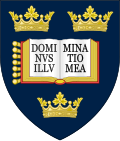History
Forestry was an important part of the university under the name of the Imperial Forestry Institute , from 1924; [4] [5] later the Commonwealth Forestry Institute from 1939. [6] The Oxford Forestry Institute was incorporated into the Department of Plant Sciences in 2002, [7] and research relating to forestry was undertaken under that name until 2022 when the department merged with the Department of Zoology to form the Department of Biology. [1] Some students were Imperial Forest Service students, who came from many parts of the British Empire to qualify as foresters before they returned home. [8] It ran a post graduate MSc forestry course for many years: Forestry and its Relation to Land Use, [9] until 2002. [7]
In January 2021, the Oxford City Council approved the £200m construction of the Life and Mind Building, [10] which will be the university's largest building project and combine the Departments of Experimental Psychology and Biology. [11] It will replace the Tinbergen Building on South Parks Road, which was closed and demolished when asbestos was discovered in 2017. [12] The building will feature multiple laboratories, teaching and testing spaces providing research facilities for 800 students and 1200 researchers. Work is expected to start in June 2021, with the building opening in September 2024. [12]
This page is based on this
Wikipedia article Text is available under the
CC BY-SA 4.0 license; additional terms may apply.
Images, videos and audio are available under their respective licenses.

